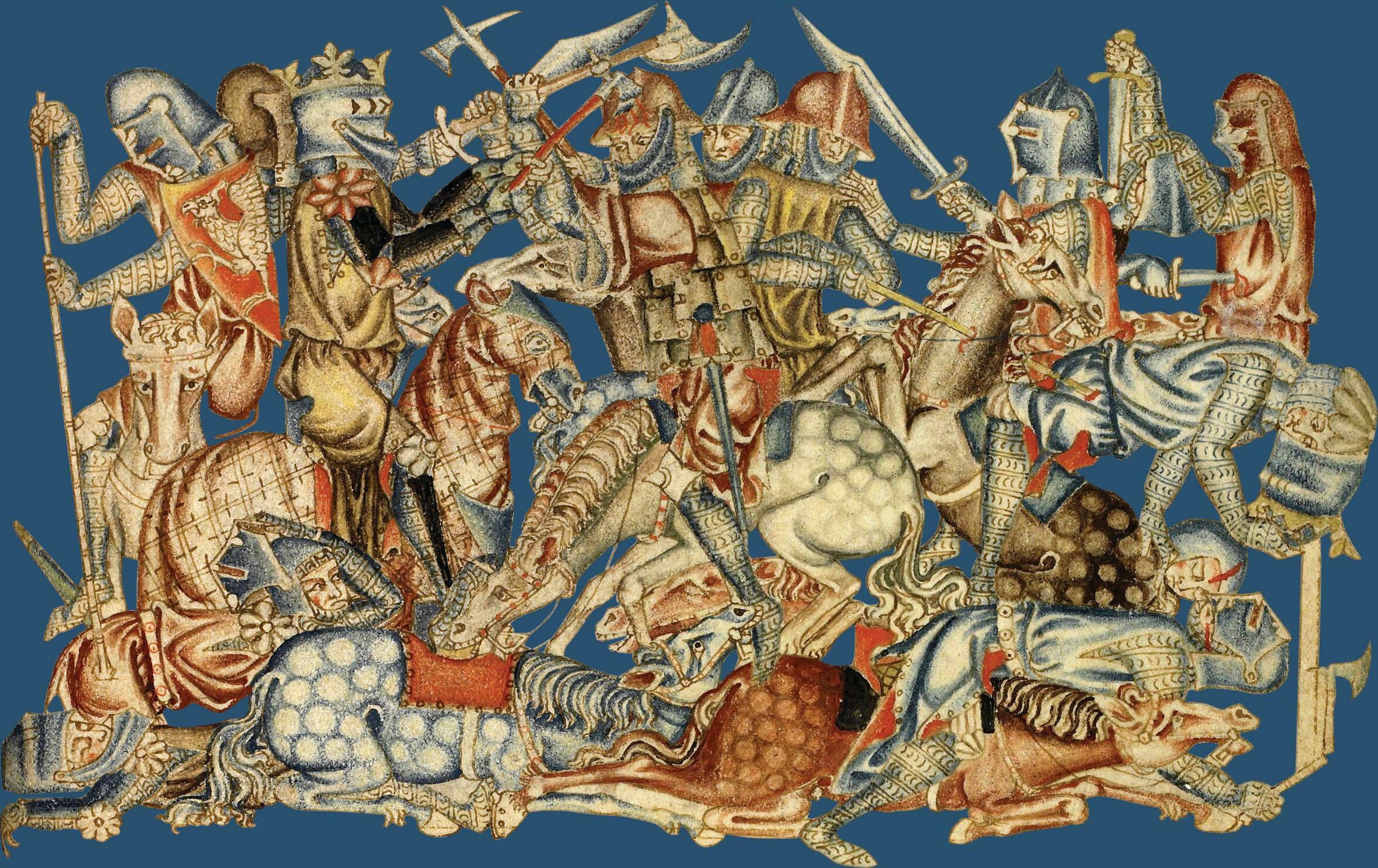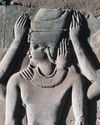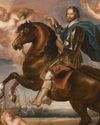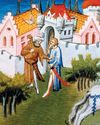
In June 1314 a great army rumbled forwards, parallel to the river Forth, following the old Roman road that led north across the war-ravaged Anglo-Scottish border. The king of England, Edward II, rode at the head of an army of around 18,000 infantry and 2,000 heavy cavalry horses. A baggage train allegedly 20 miles long groaned under the weight of arms, plate, food and wine and the administrative paraphernalia associated with the management of the crown, including England's Great Seal. The army was marching to relieve Stirling Castle, an English-held bastion 40 miles north-west of Edinburgh that was under siege by Edward Bruce, brother of the self-proclaimed king of the Scots, Robert.
Edward II was a king in a hurry. Should the Scots capture Stirling, he would lose access to the north of Scotland and with it, his grip on the land his father, Edward I, the self-styled 'Hammer of the Scots', had conquered at the outbreak of war in 1296. And so he had mustered an army in Berwickon-Tweed, the English administrative centre in the north, and marched in haste. The knight Sir Thomas Gray rode towards Stirling that day and 40 years later his son (also Sir Thomas Gray) would record his father's account of the battle in his book Scalacronica.
As the English marched north, Robert the Bruce prepared for combat. He allocated commanding roles to loyal soldiers such as James Douglas, otherwise known as Black Douglas (possibly for his black hair but most likely for the fact that he'd raided, torched and pillaged his way across the northern frontier). Together they trained 5,000-6,000 infantry to use spears as offensive weapons in 'schiltrons' - hedgehog formations of razor-sharp steel that would push forward into attack against oncoming cavalry. These became the greatest weapon of the Wars of Scottish Independence, a fighting machine that could destroy a cavalry army.
This story is from the {{IssueName}} edition of {{MagazineName}}.
Start your 7-day Magzter GOLD free trial to access thousands of curated premium stories, and 9,000+ magazines and newspapers.
Already a subscriber ? Sign In
This story is from the {{IssueName}} edition of {{MagazineName}}.
Start your 7-day Magzter GOLD free trial to access thousands of curated premium stories, and 9,000+ magazines and newspapers.
Already a subscriber? Sign In
A modern icon
IVWWAN MORGAN lauds an insightful and clear-eyed examination of a leader blessed with charisma and quality but also marred by personal flaws

Shipwrecks on Scilly
Beneath the clear waters of the Isles of Scilly lurk treacherous rocks on which more than 1,000 ships have foundered. CLARE HARGREAVES discovers their stories

Medieval sambocade
ELEANOR BARNETT recreates an early cheesecake - a dish with surprisingly long roots stretching back well over two millennia

Greek drama
LLOYD LLEWELLYN-JONES is swept along by an engaging exploration of the Ptolemaic rulers of Egypt in the final centuries before Rome conquered this ancient land

Unravelling the enigma
JOSEPH ELLIS is impressed by a detailed, colourful and insightful biography of George Villiers, a Stuart royal favourite who made powerful enemies

The Elusive Pimpernel
Some suffragettes marched with banners, or printed and distributed propaganda pamphlets. Others took more direct action. DIANE ATKINSON tells the story of one activist who employed arson to spark awareness of the burning issue of women’s suffrage

A HILL TO DIE ON
In early 1944, the Allied advance in Italy was brought to a halt at a rocky outcrop called Monte Cassino. And at the heart of the bloodbath that followed, writes James Holland, was flawed leadership

How to build a radical
How to build a radical 6 8 The experiences that shaped Guy Fawkes and his gunpowder plot co-conspirators into violent extremists seem all too familiar today. Lucy Worsley tells a story of religious clashes, state-sanctioned torture and comrades-in-arms willing to die for the cause

WHO WAS GREATEST THE US PRESIDENT?
With Donald Trump set to be inaugurated as the 47th president, we asked seven historians to nominate their choice for the most accomplished American leader

Land of make believe?
Marco Polo's adventures in Asia earned him everlasting fame. But are his accounts of his travels essentially works of fiction? Peter Jackson asks if we can trust this medieval travel-writing superstar